Infuse Your Cruise with Slow Travel
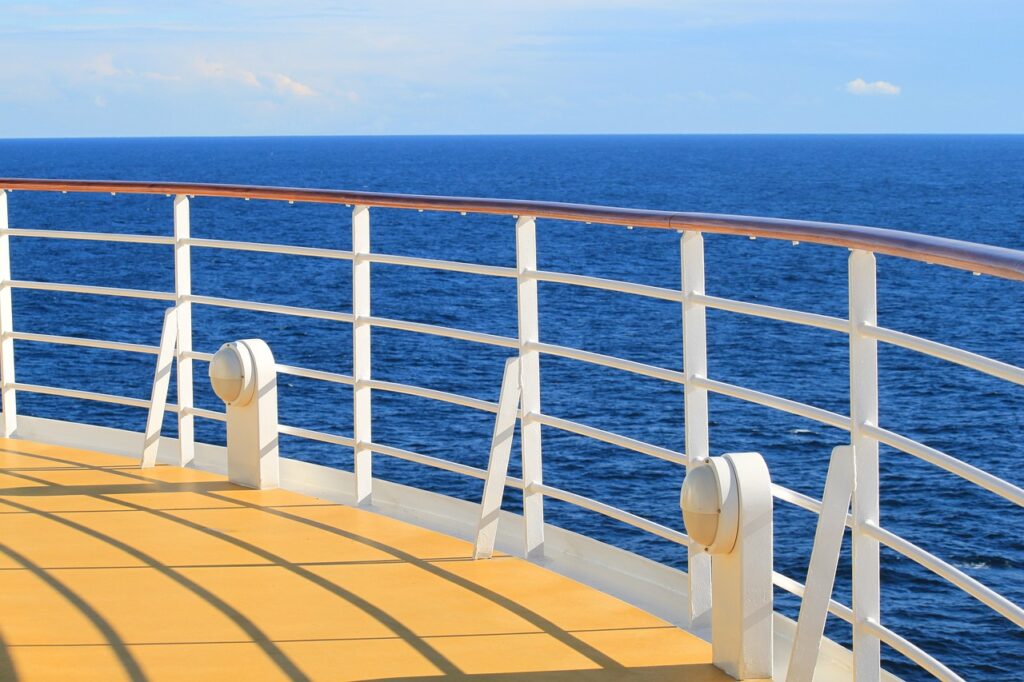
Lots of people love cruises. But when my husband and I took our first cruise this year, one thing was clear—the pace was very different from our usual slow-travel style.
To be clear, we did enjoy ourselves. We checked items off our bucket list—snorkeling a reef-encrusted shipwreck, swimming with dolphins, and feeding stingrays at a famous sandbar. But after several jam-packed, fast-paced days, we felt the need to turn down the volume.
We decided to augment our cruise with a “slow travel day” despite the minuscule time frame of five hours ashore. Here’s how.
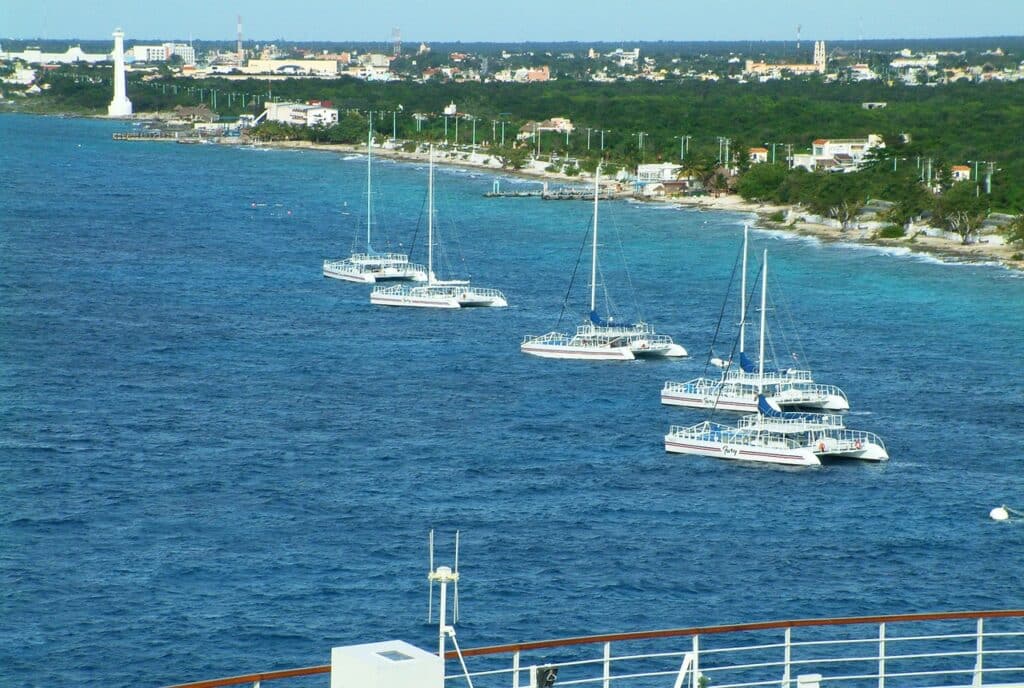
We Did Our Research
Research-oriented by nature, I like to collect all the information I possibly can about a location before traveling there.
I had watched a documentary showing two MSC captains taking lunch at a festive hole-in-the-wall that specialized in seafood while the ship was docked at Cozumel. I skimmed through the episode on my favorite streaming service until I spotted the pink and turquoise walls and the cooler full of enormous, whole fish behind the counter. I knew this was where we wanted to go.
The next step was to locate the restaurant on Google Maps. Would we need to call a taxi? That would conflict with the slow pace I desired. As it turned out, the restaurant was about a mile from the cruise terminal—a 25-minute walk. I downloaded the offline map, knowing I wouldn’t have access to WiFi once we departed.
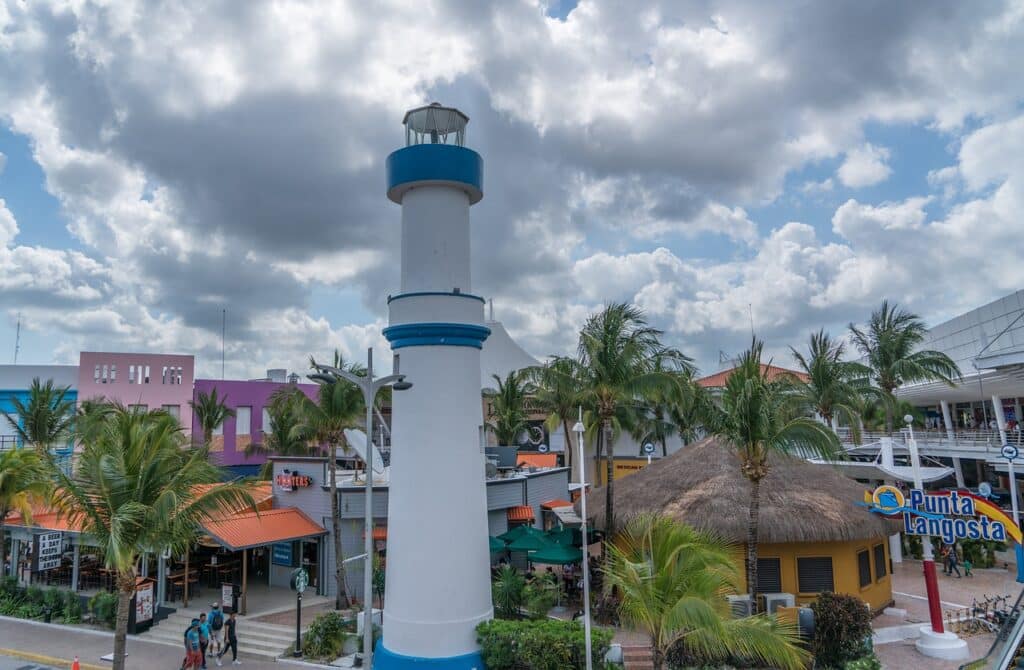
Finally, I needed to know what to expect in terms of personal safety. I was encouraged to learn that Cozumel has one of the lowest crime rates in Mexico. Many expat blogs said it was safe for pedestrians, even females traveling solo.
With our plan intact, we looked forward to our slow-travel day.
We Took the Road Less Traveled
We watched from our balcony, coffee and pain au chocolat in hand, as the cruise ship carefully motored up to the docking terminal. We decided to disembark as early as possible to get the most from our five hours ashore.
Vacationers disembarked in a herd, shepherded through security checkpoints towards vendors hawking their wares. We stopped to admire some pressed leather belts embellished with flowers before escaping the crush of the crowd.
The air was cool and the road wound alongside a rocky beach. Shops lined the opposite side of the street, but most were not yet open for the day. One parking lot held a swarm of motorcycle taxis waiting to take tourists to various points of interest.
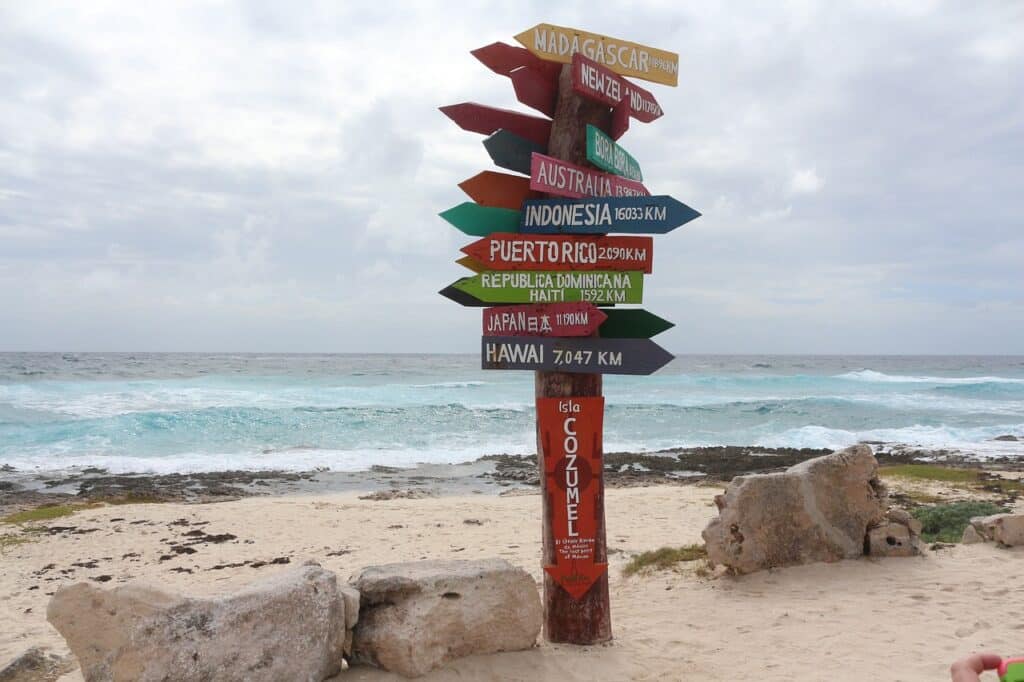
As we walked, I spotted the same floral belt at several vendor stalls, the prices decreasing incrementally the further we got from the tourist center. We stopped at Parque Benito Juárez—Benito Juárez Park—to take photos with a well-known ” COZUMEL” installment in large letters.
Then we turned our steps inland. The number of obvious tourists, wearing cruise line lanyards like ours, dwindled. Sleepy al fresco cafes were just opening their doors. Dogs barked from fenced-in courtyards at many of the candy-colored residences, their stuccoed exteriors smiling with soft pinks, oranges, and blues. Tropical plants and even palm trees lined the streets, their branches and tendrils reaching over crumbling walls. Suddenly dreamlike, the street was covered in pink petals as we passed beneath a towering tangle of azalea bushes.
The cracked sidewalk finally led us to our destination—an unassuming building with a hand-painted sign, nestled among a street of similarly humble, handspun businesses. If not for Google Streetview photos, we might have missed the billboard reading “Comeme o llevame pero no me dejes”—“Eat me or take me but don’t leave me.”
We approached the large, open windows of the Pescadaria San Carlos. In my broken Spanish, I asked if they had fried conch, a large sea snail that the area is known for. The young man at the counter spoke only Spanish, and when he realized English was my first language, he called the owner from the kitchen.
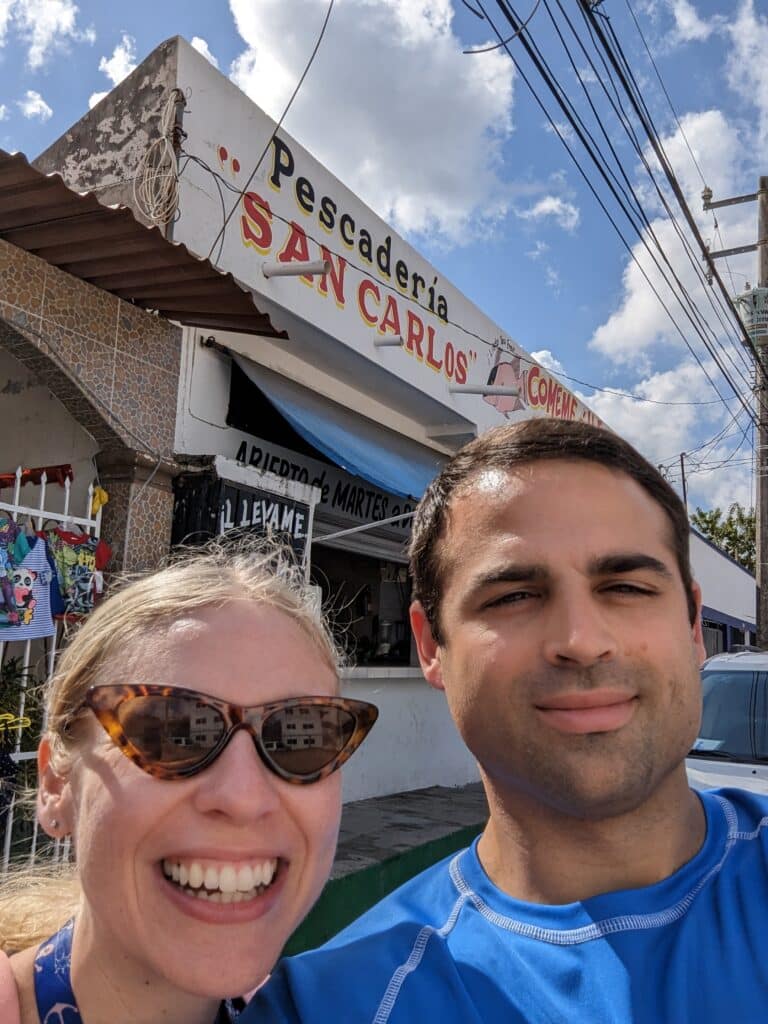
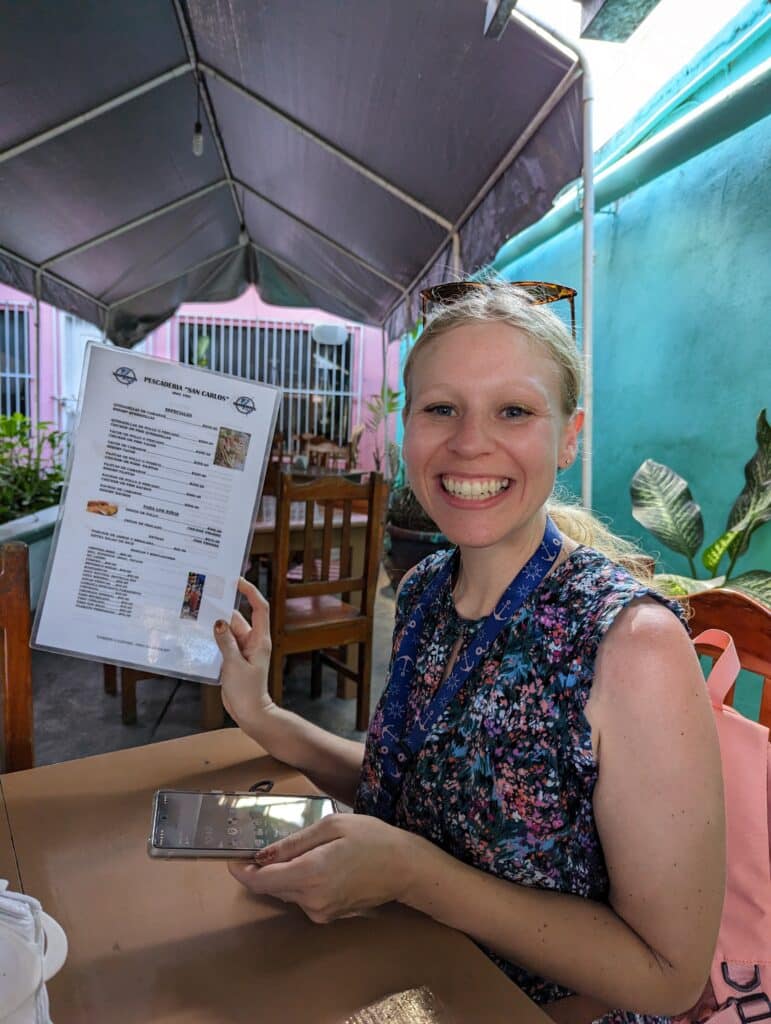
And there he was—the same man from the documentary, who had opened a cooler of whole fish for the ship’s captains.
The owner introduced himself as Diego Aguilar. “What can I get you?” he asked with a smile.
“Do you have fried conch?”
“Oh, not today,” he replied. He explained that they fry large strips of the invertebrate meat after a long process of marinating it and beating it with a meat mallet to tenderize it. Regrettably, they were out of conch strips and wouldn’t receive another shipment until tomorrow.
“Unfortunately, we’re on a cruise and today is our only day in Cozumel. In fact, that’s how I learned of your restaurant—two of the MSC captains eat here every time they’re in port.”
“Ah, yes! Ancona y Scala,” he said, calling them by name. “We don’t have the conch strips, but we do have conch ceviche prepared, and that’s what we’re really known for.”
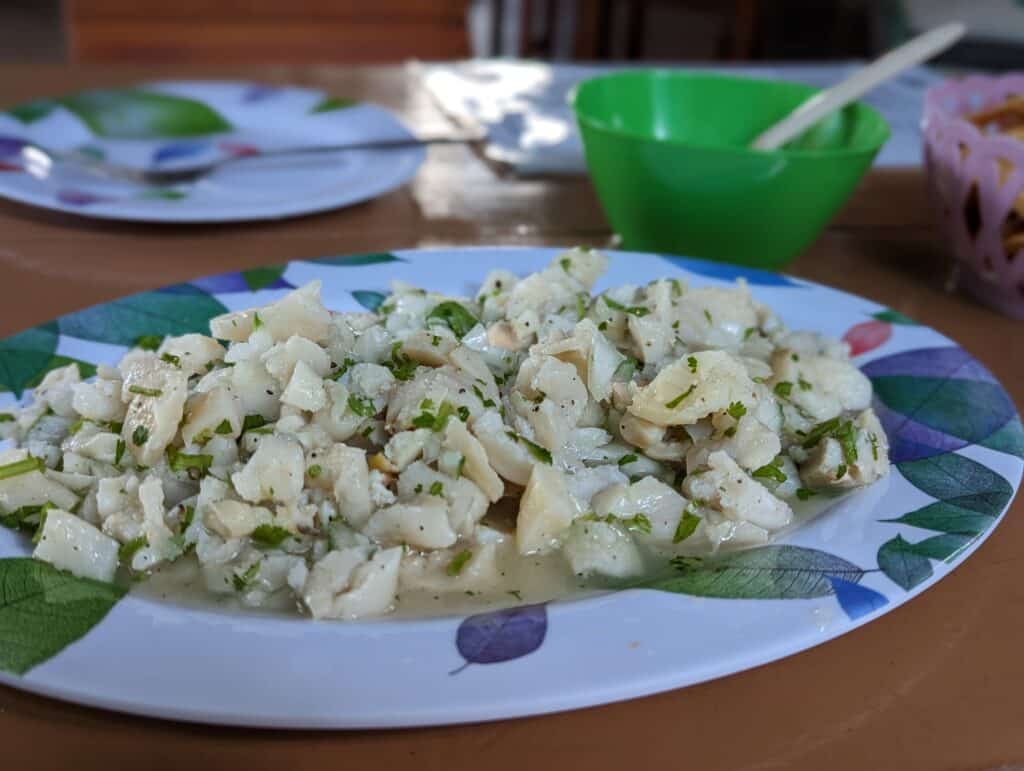
I smiled, as ceviche is one of my favorite dishes. Diego gestured for us to follow him into the courtyard behind the lunch counter. It was shady and cool despite the noonday heat. Pots of tall green plants, as well as a small plastic flamingo, surrounded the patio, and there was a central island populated by tropical foliage and even a small tree. Tucked between the pink and turquoise walls of adjoining buildings, it felt like a secret oasis.
We were the only customers present, so Diego introduced us to his family – his wife, grown children, and other relatives working behind the scenes. He sat down with us as we munched on chips and delightfully fresh salsa, telling us of the decades he’d been in the restaurant business and of the family in Texas who fly him in yearly to prepare their Thanksgiving dinner.
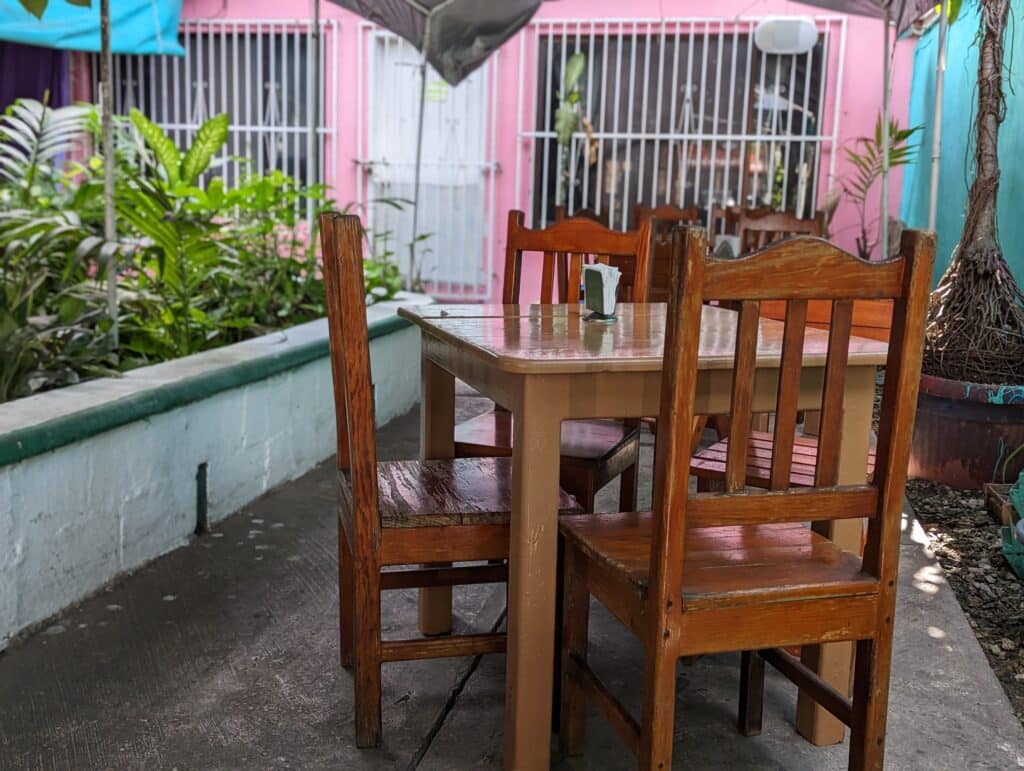
When the salad of finely chopped, citrus-infused conch was ready, he brought it to our table with a flourish. It was the sweetest ceviche I’ve ever had, lacking any fishy taste or rubbery texture. One would never know that the firm, white meat was a snail and not a fish.
We also sipped on a very strong margarita. When I commented on it, Diego said, “I can make you a larger, less strong margarita if you want, but this one is better, small and strong.” Then he said, “There are no gringos here—I treat everyone like family.”
It was true—we did feel like family at the Pescaderia San Carlos. We had spent our day, not just crossing experiences off a bucket list, but making real human connections.
Diego spoke English fluently but encouraged me to speak to him in Spanish. “Estoy tratando,” I said, “pero es muy dificil.”
He looked taken aback. “Spanish is not hard!” he said. “Just keep practicing. You just have to use it, and you will learn.”
That was the lesson I took away from my brief slow travel day in Cozumel. Whether learning a language, planning a day trip, connecting with another culture, or doing anything else worthwhile, it’s not too hard… you just have to keep trying.
If you find yourself in Cozumel, stop in and see Diego. You won’t regret slowing down for a long stroll, a hearty meal, and an hour or so of friendly conversation.
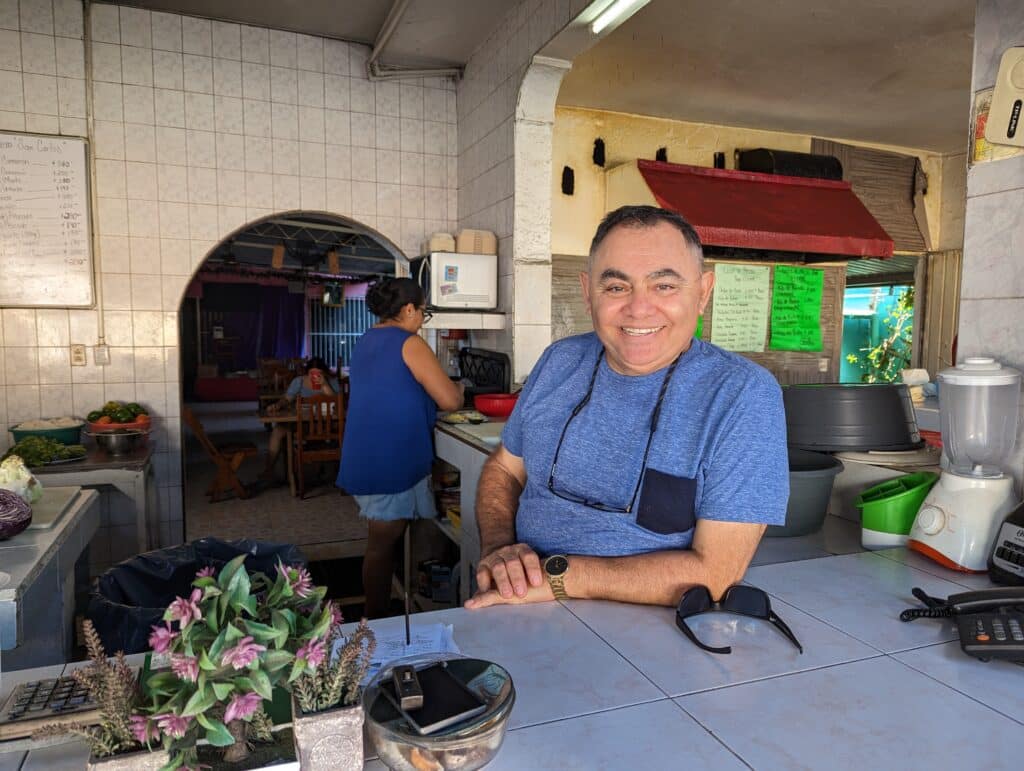
Click to Book Travel and Accommodations to Anywhere


Cara Siera is a freelance writer, editor, and photographer from Tennessee, USA with a background in psychology and sociology. Her work has appeared in Creative Nonfiction’s online journal Brevity, the Red Mud Review, Fearsome Critters: A Millennial Arts Journal, and countless websites. Cara also curates the work-from-anywhere lifestyle and travel blog Anatomy of Adventure. She is a foodie with a passion for international travel, recipe creation, understanding other cultures, and the great outdoors. Learn more about her work here.